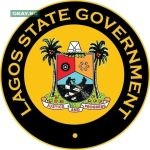The Organisation of the Petroleum Exporting Countries (OPEC) has adjusted its 2025 oil demand growth forecast, citing the ripple effects of US trade tariffs on the global economy. This revision, outlined in OPEC’s April Monthly Oil Market Report, signals a growing concern about the stability of future energy markets.
Specifically, OPEC now projects a demand growth of 1.3 million barrels per day (bpd) in 2025, a reduction from the previously estimated 1.4 million bpd. These figures represent a 150,000 bpd decrease from last month’s projections, reflecting a cautious outlook amidst prevailing economic uncertainties.
“The global economy showed a steady growth trend at the beginning of the year; however, recent trade-related dynamics have introduced higher uncertainty to the short-term global economic growth outlook,” OPEC stated in its report. This statement highlights the organization’s acknowledgment of the significant impact of external economic factors on the oil market.
The price of OPEC’s basket of twelve crudes experienced a notable drop, falling to $66.25 a barrel on Monday, down from $70.85 the previous Friday, according to OPEC Secretariat calculations. This decline is attributed to a combination of US President Donald Trump’s trade tariffs and OPEC+’s planned increase in oil output, both of which have exerted downward pressure on oil prices and raised concerns about economic growth.
The recent implementation and subsequent 90-day suspension of US tariffs on exports from countries like Nigeria have fueled a trade war, leading to increased consumer prices, a weakened standard of living, and hindered international trade. These tariffs have also contributed to the downward revision of OPEC’s world economic growth forecast, now at 3.0 percent for this year and 3.1 percent for next year, down from previous projections of 3.1 percent and 3.2 percent, respectively.
While oil prices saw a slight recovery following the report’s release, with Brent crude trading near $66 a barrel, they have still declined by over 10 percent this month. OPEC’s oil demand forecast remains at the higher end of industry projections, contrasting with the International Energy Agency’s (IEA) prediction of peak oil demand this decade due to the global shift towards cleaner fuels. The IEA is scheduled to update its oil demand forecasts on Tuesday, providing further insight into the evolving energy landscape.
Read Also: Nigeria Eyes OPEC Quota Hike as Oil Production Rebounds
OPEC’s report also revealed a decrease in crude production by OPEC+ in March, falling by 37,000 bpd to 41.02 million bpd, partly due to reductions by Nigeria and Iraq. However, Kazakhstan, which has consistently exceeded its OPEC+ output target, increased production further in March by 37,000 bpd, breaching its quota once again.
“Kazakhstan’s production rose to 1.852 million bpd last month, above its OPEC+ quota of 1.468 million bpd for January-March,” a finding which has raised concerns.
Despite the energy ministry’s assurance that Kazakhstan will adhere to its commitments in April and partially compensate for earlier overproduction, an industry source told Reuters that Kazakhstan’s oil output in the first two weeks of April remained above its OPEC+ quota.
The recent virtual meeting of eight OPEC+ countries, including Saudi Arabia, Russia, and Kazakhstan, resulted in a decision to implement a production adjustment of 411,000 bpd in May 2025. This adjustment includes the originally planned increment for May, along with two additional monthly increments. “The gradual increases may be paused or reversed subject to evolving market conditions,” OPEC+ stated, indicating a flexible approach to production adjustments.
These eight countries are scheduled to meet on May 5th to determine June production levels, further highlighting the dynamic nature of the global oil market.
The impact of these developments is far-reaching, affecting consumers worldwide through fluctuating fuel prices and influencing the broader economic landscape. The delicate balance between supply and demand, coupled with geopolitical factors, continues to shape the future of the energy sector.













